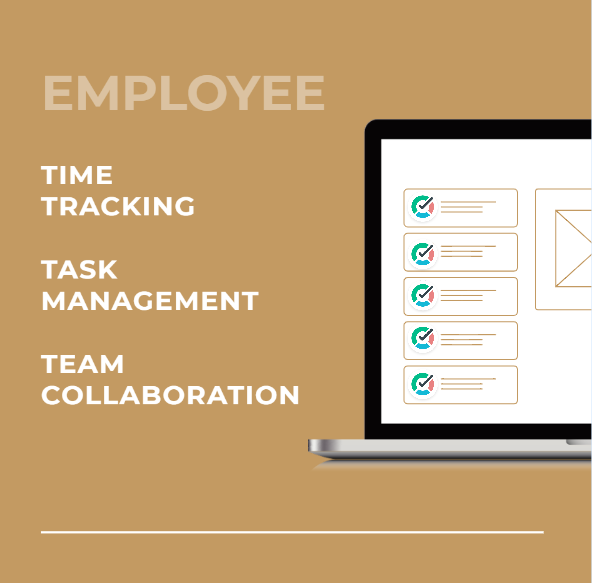3 Biggest Secrets of Employee Time Tracking
Knowing the secrets of employee time tracking, businesses can easily address issues associated with a broad scope of questions marked for convenience as FAV for Focus, Ability to adapt to changes, and Velocity in performance and management.

Though expensive city offices might disappear , employees performing everyday work will stay.

The question of equipping employees with tools for monitoring effectiveness of their work regardless of the physical presence in the offices will be on agenda of every business aimed at growth, and employee time tracking may prove to be a silver bullet to hit all targets🎯.
Moreover, by knowing the secrets of employee time tracking, businesses can easily address issues associated with a broad scope of questions marked for convenience as FAV for Focus, Ability to adapt to changes, and Velocity in performance and management.
★ FAV
★ Focus
★ Adaption to changes
★Velocity
What Does Employee Time Tracking For Focus?

Everybody knows the long-proven technique of time blocking for better concentration. Creating the situation when you limit the time frames helps you dive in the problem, eliminate all the distraction and go through 'tunnel-think-tube' fast to reach the destination on time.
Focusing on one thing at a time creates momentum and clutter-free mental space. It comes of utmost importance in the light of disturbing statistics defining that only 20% of the work hours on average are utilized in deep work while the rest of the work time 'slips' though performing mundane tasks.
Time tracking systems let employees allocate time slots on a recorded work time line. With entering the information on the task (short description, tags, category) employees can fully concentrate on task completion: time on its performance will be automatically recorded.
According to studies , the implementation of employee time tracking eliminates productivity drop by 80%. It leads to training attention management skills instead of generic “time management” skills.
Upon finishing the task employees can see the level of activity and time frames: the recorded metrics may give some valuable insights in performance and help estimate the time needed on a similar task with superior accuracy.
Overall, among benefits digital time tracking brings to employees' work, we should list:
- Optimization of workflow
- Cutting out the repetitive tasks off employees' daily schedule
- Blocking brain-draining distractions
- Sharpening focus.
Hence, time tracker single-handedly does a job of dozen tools including time blocker, calculator and project manager.
Tagline: Lack of focus decreases the quality of work dramatically. Employees whose focus easily shifts from one task to the other find themselves in the permanently reactive mode, which holds them back from offering the input that supposes creation of assets for your business. Employee time tracking saves from loss of focus and lets create distraction-free environment and concentrate on a single task.
What Does Employee Time Tracking For Adaptability?
We can all relate to the topic of adaptability because it became a logo of 2020. To mitigate the virus spread, a global lockdown was announced, and businesses had to pass an exam on adaptability on-the-go. Those equipped with employee time tracking fared better than others.
Time tracking and adaptability prove to be directly connected: the more you know your metrics, the better you can predict the outcome in terms of time spending, and, therefore, maneuver in case of change of scenario.
Furthermore, with most tech firms like Twitter looking at remote work as a permanent move , the office-based culture becomes the thing of the past, which makes the digital ecosystem ensuring remote work accountability come on the forefront.
Employee time tracking under the conditions of 'new normal' can offer a bunch of advantages:
- Creating more flexible schedules
- Allotting time for achieving short-term goals
- Planning in sprints
- Balancing workloads with employee timesheet
- Integrating in project management systems
- Managing distributed teams.
Planning time in tasks that are easy to track within a single timeline assists in building smooth workflow and preventing burnout. Employee time tracking creates clarity around specific task priorities and incorporates easily in a comprehensive workflow management system.
Tagline: All the big players aim at scalability for growth and adaptability for withstanding in case of crisis. It implies that companies need to model healthy leadership and empower employees with tools fostering productive behaviors as it is the only environment that supports adaptability. The properly organized routine is the foundation of fast adaption to changed circumstances and a facilitator of efficient collaboration both remotely and onsite.
What Does Employee Time Tracking For Velocity?
The key market players pay attention to diversity as the foundational value : encompassing diversity unlocks more proactive contribution and leverages employees' expertise in project accomplishment regardless of their complexity.
It may sound like a shocking fact but 25% of their time employees spend on the search for information related to work procedures while managers can spend more than 50% of their time on performing the routine tasks rather than productive work.
To facilitate the admin process, ease some challenging assignments, take agile approach and maintain high velocity of performance, it is vital that companies set high priority to synchronizing employees' complex work across multiple departments.
Challenges of keeping velocity in project management invite lots of other questions related to establishing the unbroken workflow. What tools are there to make it possible organize employees' work with agility in mind, especially with differences in time zones and workforce location?
Often-quoted words about managing only measurable things apply best.
A time tracker as the tool measuring velocity will help:
- Gain clarity over the project
- Identify top/medium/low level task priorities
- Prevent abuse of Internet usage at work
- Set task dependencies to enable agility in team performance
- Remove bottlenecks in communications across business departments.
Tagline: By applying automatic time tracking of employees' work hours, it is easy to see how actual performance ends up against estimates. Moreover, with tools enabling employees to get accurate time calculations, requests that employees deal with in job both inside and outside the organization get easily filtered in terms of consumption of resources and time. The practice of employee time tracking in businesses results in changes that in most cases can feel astonishing due to the speed and simplification of the routine.
To Conclude

Employee time tracking ensures that knowledge workers' input and output within business processes become tangible and actionable. Metrics introduced in a unified and easy-to-tap in system help employees regain focus and experience less stress when a high level of adaptability is needed.
In addition to the advantages for individual productivity, applying a comprehensive time tracking system offers benefits to the whole organization. In particular, it brings ease in quantifying workloads and reviewing employees' performance bias-free to enhance practice of accountability and efficiency.
